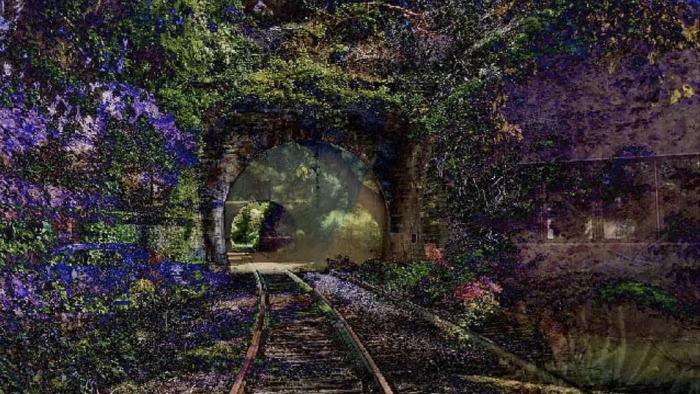Unlock the Editor’s Digest for free
Roula Khalaf, Editor of the FT, selects her favourite stories in this weekly newsletter.
The writer is a senior partner at William Fry and a member of Ireland’s AI Advisory Council
Generative artificial intelligence poses two copyright puzzles. The first is the widely discussed question of compensation for work used to train AI models. The second, which has yet to receive as much attention, concerns the work that AI produces. Copyright is granted to authors. So what happens to work that has no human author?
The US has drawn the clearest line in the sand to date. In 2023 the US Copyright Office granted copyright protection to the graphic novel Zarya of the Dawn but rescinded protection for any AI-generated images — protecting only the human-authored text and arrangement. More definitively, a federal appeals court ruled in March that the pretty, purple and green AI-generated artwork “A Recent Entrance to Paradise” could not receive copyright protection because works must be “authored in the first instance by a human being”. The message is unambiguous: AI prompts, however sophisticated, are not enough alone to warrant authorship.
China has taken the opposite path. In 2023, the Beijing Internet Court ruled that AI-generated images could receive copyright protection, finding that a user’s intellectual investment in selecting prompts and refining outputs constituted human creativity.
So far, the UK and Ireland occupy a curious middle ground. Both jurisdictions provide copyright protection for “computer-generated works”. But this protection may be on shaky ground. A consultation from the UK government last year asked whether it should be removed. Ireland’s AI Advisory Council has made a similar recommendation.
Global divergence in legal frameworks can create problems for businesses. The same AI-generated content could be legally protected intellectual property in Beijing while residing in the public domain in Boston. That means an AI-generated jingle or AI-generated marketing copy made in the US could, in theory, be used by anyone.
This issue doesn’t just affect writers, graphic artists and composers who use AI for their work. If your business is creating software, you could be even more exposed. In the US and other jurisdictions, any individual lines of code generated by AI would not be protected even if the software product as a whole was. This has the potential to impact corporate transactions where deals pivot on what a company actually owns.
Contracts with employees and external contractors fall under the same category. Most such documents have provisions noting that any copyright material generated by an employee or contractor is assigned to the company. But you cannot assign something that does not yet exist.
It is unrealistic to stipulate that employees and contractors cannot use new technology like AI. Such a request would be as archaic as asking them to submit handwritten work.
Lawyers need to find alternative solutions. If AI-generated code is not protected by copyright, for example, then new contracts need to be drawn up that treat it as a trade secret.
The Irish AI Advisory Council on which I sit has gone further — recommending that the government introduce a limited form of IP protection for certain AI-generated works. However, this has been met with pushback from the creative sector. It will be difficult for one country to implement such a policy alone.
Victorian-era copyright rules are breaking under the weight of machines that can compose, code and create at scale. Litigation against AI companies from the likes of Getty Images and The New York Times centre on exploitation of existing works. So far the ownership of AI-created content has remained largely untested before the courts. But that could soon change.
AI is reshaping authorship. Surviving the transition requires rewriting contracts, restructuring IP strategies and building protection through trade secrets and confidentiality. Relying on copyright protection that may no longer exist is not enough.
